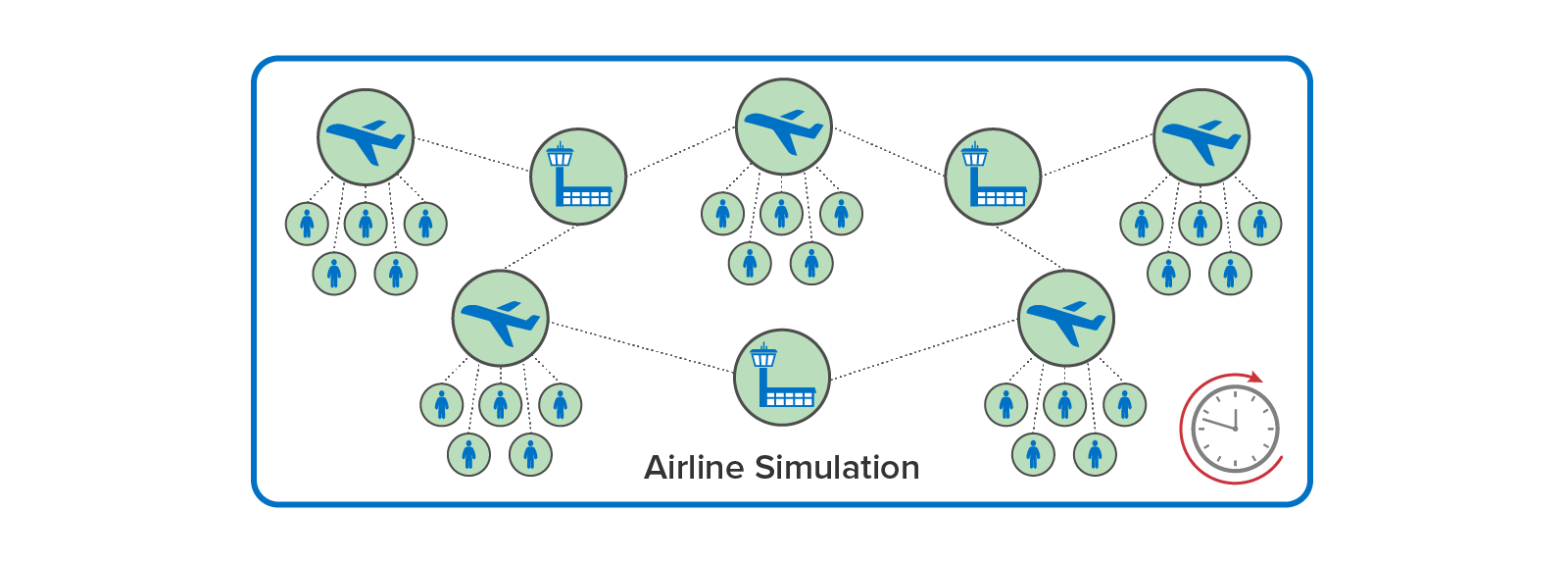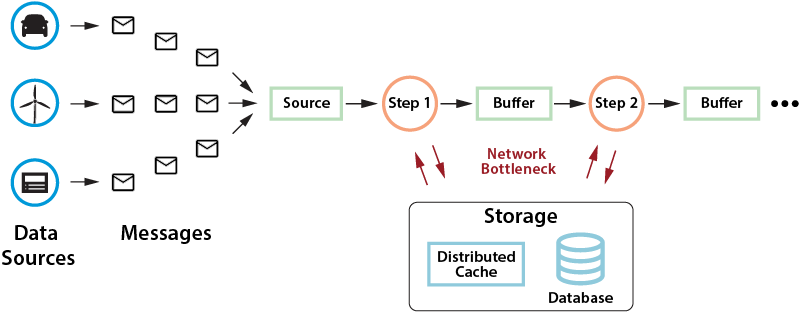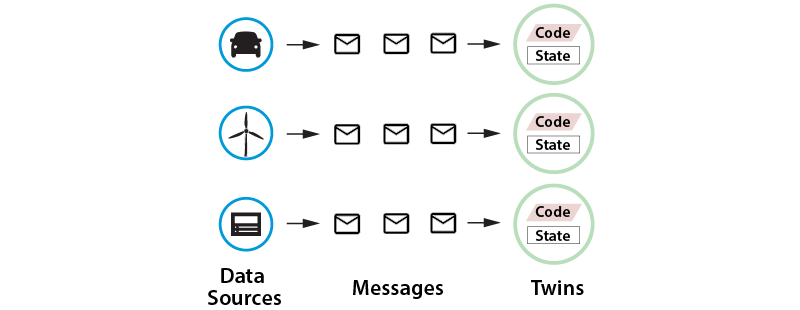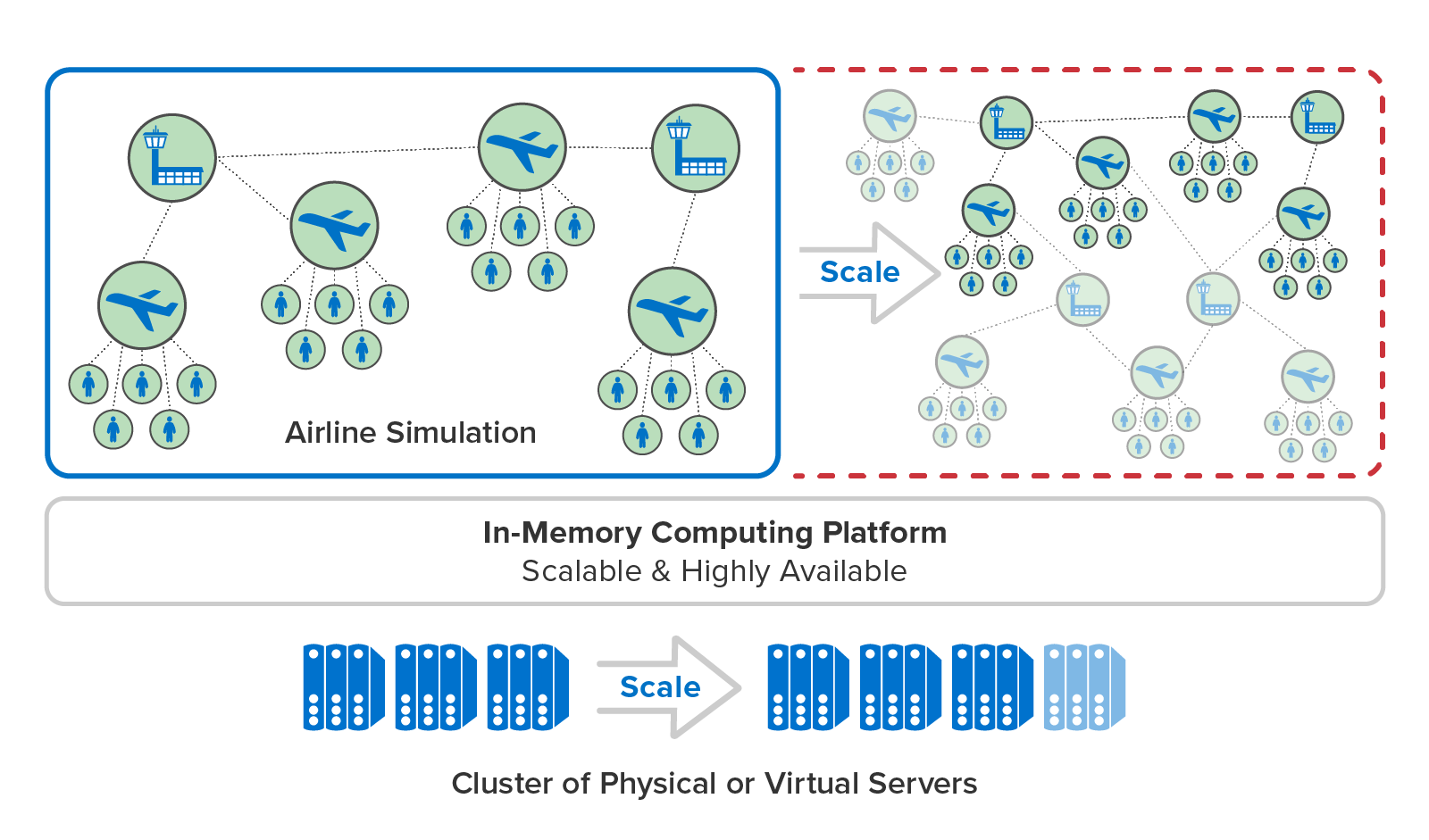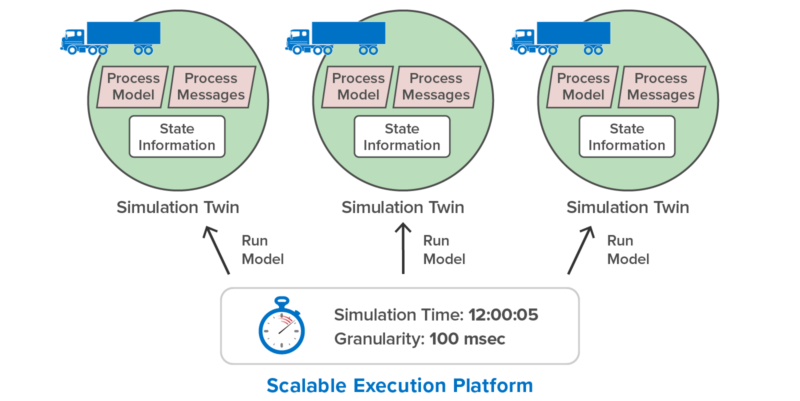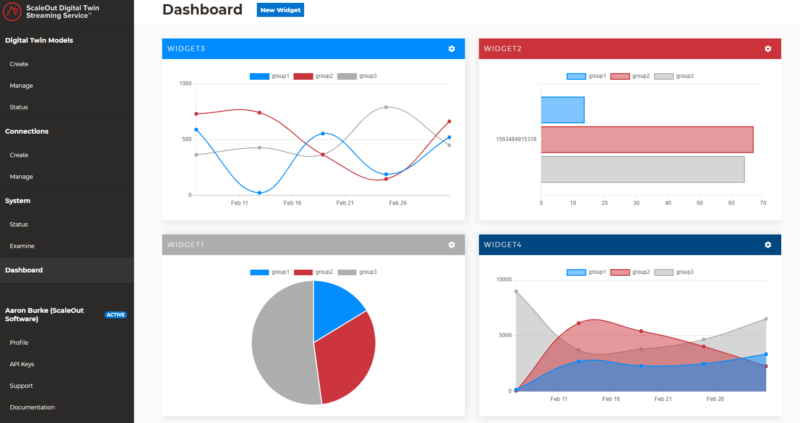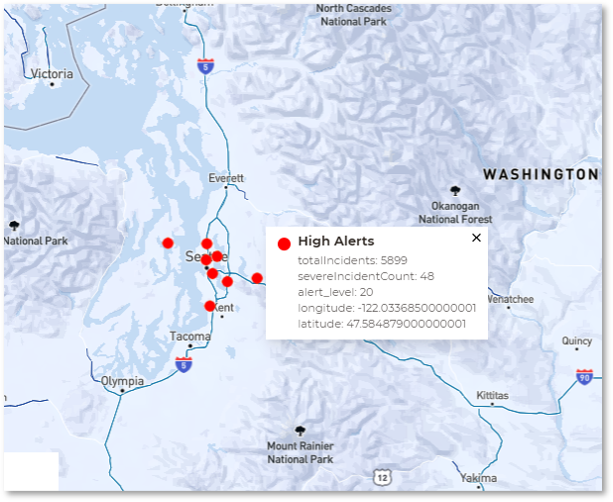Create the Next Generation of Streaming Analytics
A Breakthrough for Introspection of Streaming data
Traditional stream-processing and complex event-processing systems focus on extracting patterns from incoming telemetry, but they can’t track dynamic information about individual data sources. This makes it much more difficult to fully analyze what incoming telemetry is saying. For example, an IoT predictive analytics application attempting to avoid an impending failure in a population of medical freezers must look at more than just trends in temperature readings. It needs to evaluate these readings in the context of each freezer’s operational history, recent maintenance, and current state to get a complete picture of the freezer’s actual condition.
That’s where the power of real-time digital twins comes in. While digital twin models have been used for several years in product life cycle management, their application to stateful stream-processing has only now been made possible by advances in scalable, in-memory computing. Unlike traditional streaming pipelines, like Apache Storm and Flink, real-time digital twins offer a simple, intuitive technique for organizing important, dynamically evolving, state information about each individual data source and using that information to enhance the real-time analysis of incoming telemetry. This enables deeper introspection than previously possible and leads to significantly more effective feedback — all within milliseconds.
Real-time digital twins also provide a powerful means for deploying machine learning (ML) capabilities that track incoming telemetry and look for anomalies that require alerting. By running within digital twins, ML algorithms can be tailored for each type of device and its parameters, and they can run independently and simultaneously for thousands of data sources.
Equally important, the state-tracking provided by real-time digital twins allows immediate, aggregate analytics to be performed every few seconds. Instead of deferring aggregate analytics to batch processing on Spark, real-time digital twins enable important patterns and trends to be quickly spotted, analyzed, and handled. This dramatically improves situational awareness. For example, if a regional power outage takes out a group of medical freezers, precise information about the scope of the outage can be immediately surfaced and the appropriate response implemented.
Wide Range of Applications
Real-time digital twins can enhance the ability of any stream-processing application to analyze the dynamic behavior of its data sources and respond fast. Here are just a few examples:
- Intelligent, real-time monitoring: fleet tracking, security monitoring, disaster recovery
- Financial services: portfolio tracking, wire fraud detection, stock back-testing
- Internet of Things (IoT): device tracking for manufacturing, vehicles, fixed and mobile devices
- Healthcare: real-time patient monitoring, medical device tracking and alerting
- Logistics: real-time inventory reconciliation, manufacturing flow optimization
Real-time digital twins enable real-time streaming analytics that previously could only be performed in offline, batch processing. Here are a few examples:
- They help IoT applications do a better job of predictive analytics when processing event messages by tracking the parameters of each device, when maintenance was last performed, known anomalies, and much more.
- They assist healthcare applications in interpreting real-time telemetry, such as blood-pressure and heart-rate readings, in the context of each patient’s medical history, medications, and recent incidents, so that more effective alerts can be generated when care is needed.
- They enable e-commerce applications to interpret website click-streams with the knowledge of each shopper’s demographics, brand preferences, and recent purchases to make more targeted product recommendations.
An Example in Fleet Tracking
Consider the use of real-time digital twins to track the movement of vehicles in a nationwide car or truck fleet. Each twin can track a specific vehicle using specific contextual information, such as the intended route, the driver’s profile, and the vehicle’s maintenance history; ML algorithms can continuously examine engine and cargo telemetry with predictive analytics. These twins can then alert dispatchers or drivers when problems are detected, such as a lost or erratic driver or impending maintenance issue with a vehicle. In additional, real-time aggregate analysis can detect regional issues affecting several vehicles, such as weather delays and closed highways. By boosting situational awareness, real-time digital twins enable dispatchers to quickly hone in on problems and react within seconds.
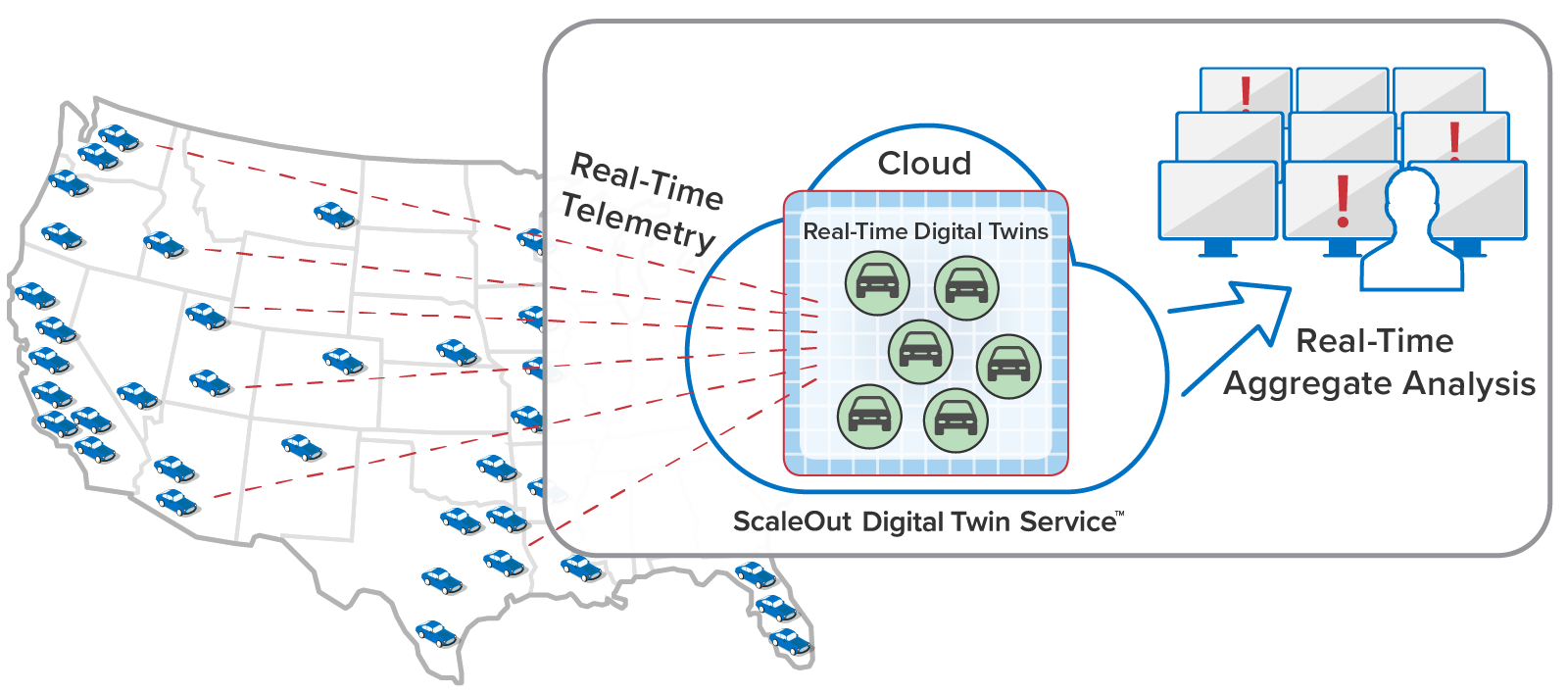
Everything in Real Time
The ScaleOut Digital Twin Streaming Service simultaneously analyzes and responds to incoming event messages from data sources while performing aggregate analytics across all data sources. This means that while real-time digital twins are tracking devices, they are also reporting aggregate patterns and trends to maximize situational awareness.
Large Workload? Not a Problem
By employing a transparently scalable, fully distributed software architecture in the cloud, the ScaleOut Digital Twin Streaming Service can handle fast-growing workloads while maintaining fast response to data sources. Integrated high availability keeps the service running and protects mission-critical data at all times.
Deeper Introspection for Better Responses
Traditional CEP and stream processing pipelines, such as Apache Storm and Flink, are “stateless,” lacking knowledge about the dynamic state of each data source to help interpret incoming telemetry. Real-time digital twins overcome this limitation by tracking state information for each data source, opening the door to much deeper introspection and more effective responses in real time. These twins can incorporate algorithmic code, rules engines, or even machine learning to help perform their analysis of incoming events.



